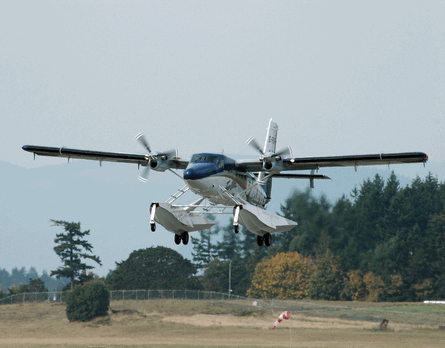A new carbonfibre twin-engined seaplane based on the design of the 1949 Grumman Albatross has been unveiled by US engineering firm The New Nose, which is seeking to exploit the burgeoning demand for these niche utility aircraft worldwide.
The move comes hot on the heels of the relaunch by Dornier Seaplane of its Seastar flying boat, 17 years after the programme was halted due to a lack of funding.
"No true seaplanes have been manufactured for more than 50 years," says New Nose president Charles Simpson. "There is a big market for seaplanes today, particularly from within the Middle East, Europe, South-East Asia and the Caribbean, and we hope to fulfil the demand with the Clipper Spirit."
According to preliminary designs, the Clipper Spirit will be 20.2m (66.5ft) long with a hull beam of 2.7m, and a wingspan of 29.2m. Target range is 1,850km (1,000nm) with a payload of 2,725kg (6,000lb), flying at 200kt (370km/h) at 10,000ft with a maximum altitude of 25,000ft.
New Nose is also evaluating the Rockwell Collins ProLine 21 glass cockpit, but is undecided on its choice of powerplant. "We are looking at existing certified engine designs, such as Honeywell's TPE331-14, but we would not discount Pratt & Whitney. The engines will be customer-driven," says Simpson
The 1.8m-high, 20.4m2 (220ft2) interior will have a flat floor and be configured for up to 24 seats as well as for corporate and medevac applications. The privately owned company expects a market demand for 200 aircraft over 10 years and already has a letter of intent for 10 aircraft from Italian seaplane operator Aqua Airlines, Simpson says.
Meanwhile, Canada's Viking Air says it is on track to clinch certification and deliver its revamped DHC-6 Twin Otter in the first and third quarter of next year respectively. Viking Air is resurrecting production on the 19-seat aircraft, dubbed the Series 400, following global demand for the product. "The overwhelming response from operators worldwide gave us the impetus to get our programme certificated and on to the market," says David Curtis, chief executive of the Victoria-based company.
 |
|---|
© Viking Air |
"Governments and regulators in growing markets such as Indonesia and India have begun to lift the ban on seaplanes, which is helping to open the market for the Series 400 in these regions - the potential is enormous."
Viking has modernised the type with Honeywell Primus Apex avionics and the $4.5 million float-equipped aircraft is fitted with Pratt & Whitney Canada PT6A-34 engines. "We have 44 ordered for the Series 400 including two announced at the show from Maldives-based operator Maldivian Air Taxi.
"Seaplanes are finding their place again as countries are waking up to the fact that building airports is timely, costly and often problematic. The cost of supporting seaplane operators is very small as very little infrastructure is needed," says Curtis.
Source: Flight International























